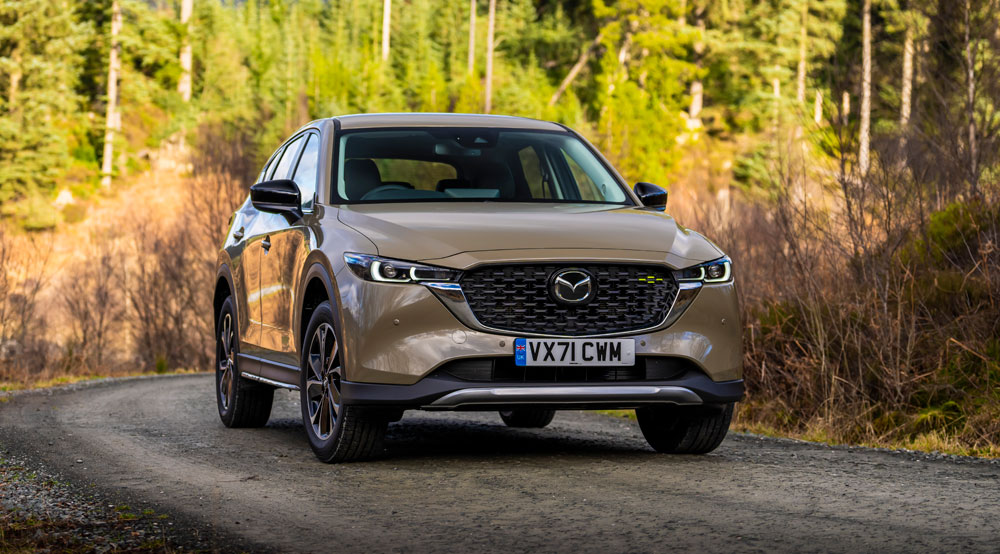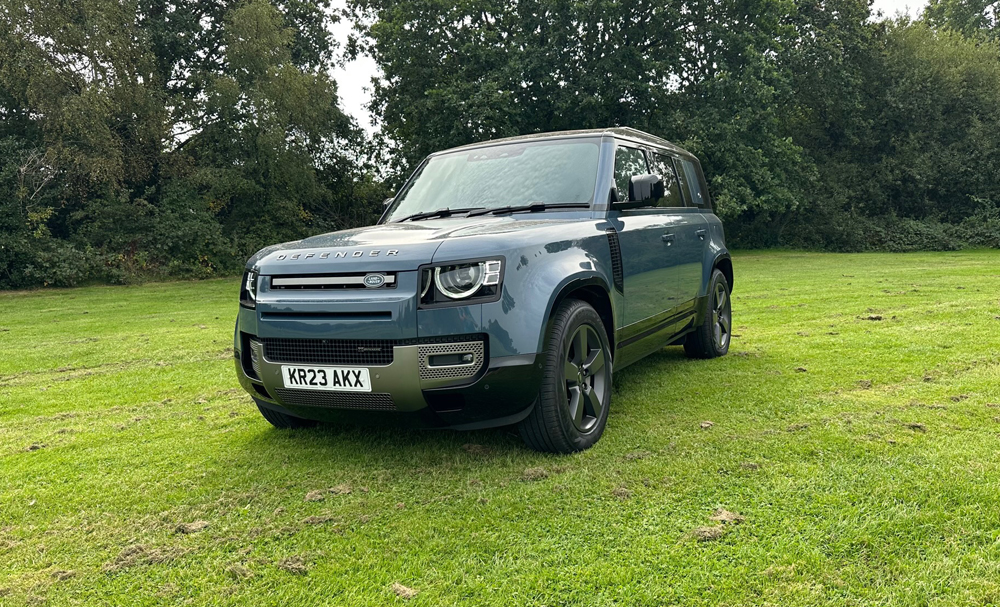
Land Rover
Defender
If ever you wanted a vehicle with outrageous pulling power, then look no further than the mighty Land Rover Defender. Decades after making its debut, the Defender is still envied for its unrivalled strength. The Series models and Defenders that followed gained iconic status globally, but now there is an all-new model in both 90 and 110 body-styling.
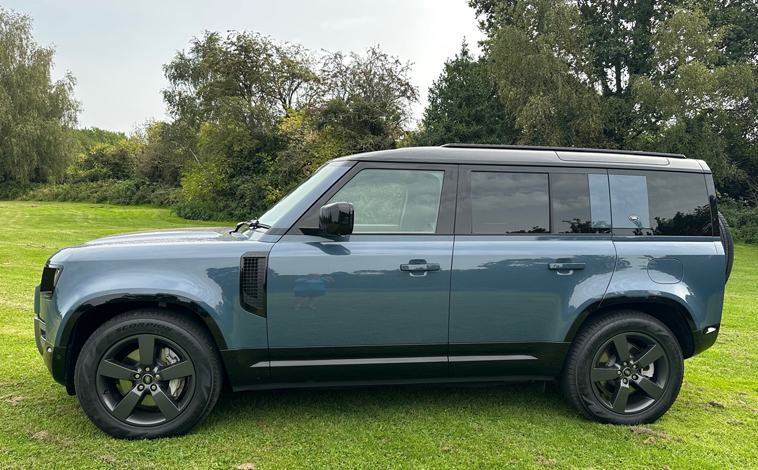
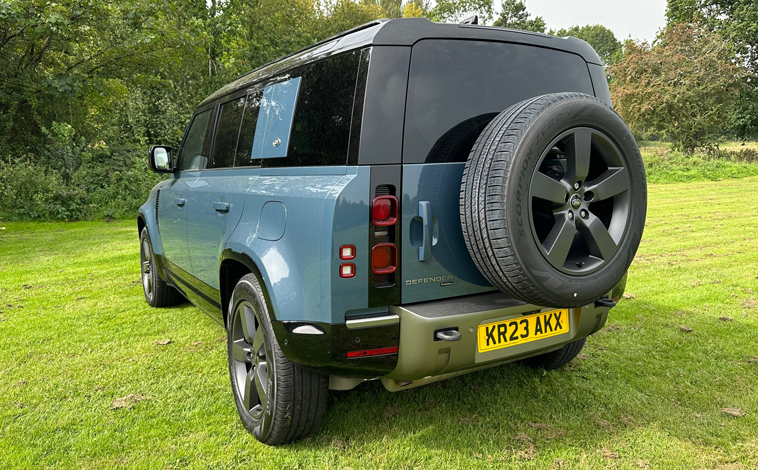
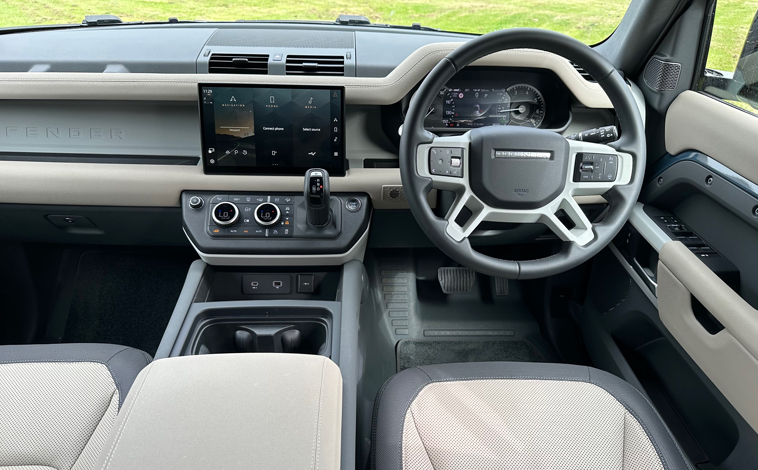
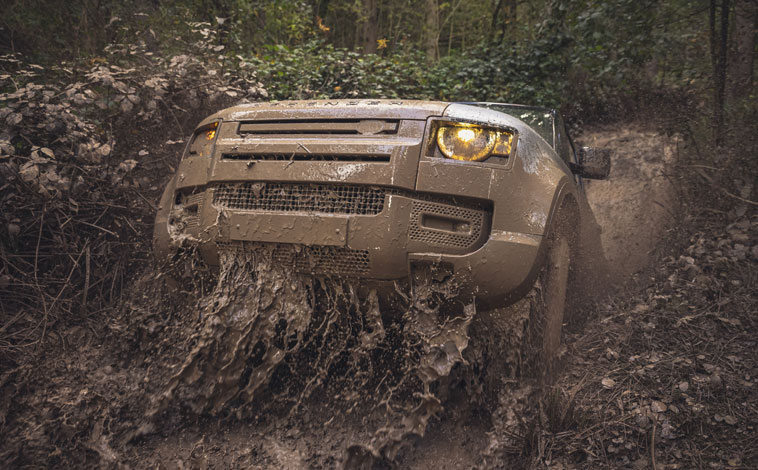
The good
Will take on any challenge - a real worker. Great fun tooThe bad
Quite a price hike as you move through the trim levelsTech Specs
Test Drive
Land Rover Defender 110 P400e (2023)
The latest generation Land Rover Defender comes in many guises with a two-door Defender 90, four-door Defender 110 which is available with five, six or seven seats, an eight-seater Defender 130 and a Defender Hardtop for commercial use.
There are diesel, petrol, mild hybrid and plug-in hybrid electric vehicle powertrains and, of course, customers can choose from a wealth of trim levels and then spec out their car to taste.
We opted for the Defender 110 P400e which meant it was driven by the plug-in hybrid system that sees a four-cylinder, 2.0-litre 300PS ingenium petrol engine along with a 104kW electric motor powered by a 19.2kWh battery.
With a total combined output of 404hp and 640Nm of torque, the Defender 110 could sprint to 62mph in an impressively fast 5.6 seconds and onto a maximum speed of 119mph – that’s not too shabby for a vehicle weighing in at more than 2.5 tonnes.
Our test model was supplied in X-Dynamic HSE trim and cost £79,875, but a number of optional packs saw the price increase £84,150. And while we are on the subject of money, the day-to day running costs are okay, but not outstanding. The official WLTP-tested fuel efficiency figure is set at 85.3mpg, but the Defender would need to be driven for much of the time in EV-only mode to see such economical rewards. Realistically, expect to see about 30mpg in everyday driving.
The carbon emissions figure is between 74g/km and 88g/km which results in fairly low road tax bills although, as the vehicle costs in excess of £40k, owners will have to pay a premium levy to the government from years two to six of £390.
Admittedly, new generation Defender is quite a price hike from the good old days, but you do get a whole lot of car for the outlay. Measuring more than five metres in length, our five seat Defender 110 boasted a truly strong road presence and looked imposing when approached from any angle.
It maintains its traditional circular lights and flat rear end with side-hinged back door. Other design cues include Matrix headlights, a black contrast roof, sliding panoramic roof, a centre-mounted stop light, black roof rails, LED tail lights, privacy glass, X-Dynamic and P400 badging, along with distinctive 20-inch Satin Dark Grey alloy wheels. Our car also featured beautiful Tasman Blue paintwork.
Moving inside, or climbing on board with the use of grab handles, you will be greeted by a very upmarket, modern and carefully thought-out interior that offers a mix of high-end materials along with some easy-clean surfaces – after all, this may be used as a working vehicle by some!
The seats are 14-way power adjustable and can be both heated and ventilated, plus the steering wheel is also powered and can be warmed against the winter blues. The main focal point is a clear 11.4-inch touchscreen which acts as the car’s nerve centre and is the access point to connect a smartphone via Apple CarPlay or Android Auto, or discover the many on-board features, including the built-in navigation, premium Meridian surround sound system, DAB radio, Bluetooth and lots more besides.
Separate dials are used to control all the climate control settings and a clear driver information display behind the steering wheel shows the vital driving data.
Our Defender 110 featured a ClearSight interior rearview mirror offering the choice of a traditional view or a live camera-feed of what’s going on behind the vehicle. Honestly, I’m not a big fan of the digital mirror and find it quite distracting, so it’s reassuring to know it can easily be flicked back to a standard view.
When it comes to performance, the Defender 110 P400e is a powerhouse of a vehicle with outrageous acceleration for its size. The automatic transmission is beautifully smooth and, although there are no paddles to change gear manually, you can use the high-mounted gear lever by switching it across to Sport.
It cruises at the national speed limit on motorways effortlessly eating up the miles and the cabin is beautifully refined with barely a sound filtering through. And then when faced with twisting country lanes, the Defender 110 is grounded with confident grip and not too much body sway through tight corners considering its height.
The Defender 110 400e starts up in Hybrid mode by default, which offers a combination of petrol and electric power for optimum efficiency. In addition, there is a Save mode to hold the EV charge, plus an EV-only option.
A choice of drive modes alter the handling of the vehicle and there are settings to cope with off-road challenges too such as combatting rocks, sand, gravel and other obstacles. We stuck firmly to the Tarmac on this test drive, but have seen just how unstoppable the Defender is when facing gruelling terrain – nothing seems to faze it.
And while many owners will not want get their shiny car too grubby, it’s always good to know just how capable it is with a wading depth of 900mm, an off-road ride height clearance of 290mm reduced to 218mm on road, an approach angle of 37.5 degrees and departure angle of 40 degrees. Realistically, most owners will be more interested in the fact it can tow a trailer or caravan weighing up to three tonnes.
Space-wise, there’s ample room for five adults to sit comfortably and behind the second row is 1,075 litres of luggage capacity, increasing to 2,380 if you drop the split-folding rear seats.
Then, throughout the cabin, there are door bins, a deep cubby box, lockable glovebox, seat back nets, cup holders, a large area beneath the centre console and a non-slip shelf that stretches almost two-thirds of the dashboard.
When it comes to charging the Defender 110’s 19.2kWh battery, it takes about two hours via a standard 7kW wallbox to get to 80 per cent or 30 minutes if using a rapid DC charger.
All in all, when you also factor in the wealth of safety systems and driver assistance aids to help protect occupants and passengers alike, the Defender 110 is an awesome piece of kit. It’s just a shame so many owners will never discover its true potential by daring to venture off-road.
Test Drive
Land Rover Defender 110 D240 First Edition (2021)
The challenge of reinventing an icon that had become a global favourite was the issue faced by Land Rover engineers and designers when the hand-built Defender no longer became a viable or sustainable option.
Throughout its lengthy history spanning more than seven decades, the Defender and Series models before it became popular for their go-anywhere off-road capabilities as well as being one of the most easily adapted vehicles. This meant the vehicle was often seen working to assist mountain rescue teams, fire and ambulance services, beach patrols and much, much more.
But last year, Land Rover introduced the very latest version of the Defender, which although no longer hand-built in the UK, still maintains plenty of quirky stand-out characteristics.
Even the most die-hard fan of the earlier models, and I am one of them, would have to admit they are not the most comfortable vehicles to drive. They are cramped, noisy, quite bouncy, had the turning lock of a large barge and lacked any of the refinement found in modern cars. Maybe that’s part of the attraction.
However, new Defender is a completely different story. It’s beautiful to drive on the road with comfort levels never experienced in the vehicle before. It’s quiet, nimble, dynamic, packed with modern technology and yet it can still take on the roughest, toughest terrain when put to the test.
Our five-door Defender 110 test vehicle was powered by a 2.0-litre diesel engine with 240PS of power and 430Nm of torque. It could reach 60mph from a standstill in 8.7 seconds and topped out at 117mph, while delivering a combined 31.7mpg with carbon emissions from 234g/km.
It was supplied in high-end First Edition specification costing £59,220, although a few optional extras saw the final price creep up to £60,593. So, fair to say that the new Defender is not exactly the cheap option it once was.
From a design point of view, the Defender 110 definitely still looks the business. It retains its bold, upright, box-like stance with a side-hinged rear door complete with full-sized spare wheel on the back. There is a contrast-coloured roof, privacy glass, front fog lights, chunky wheels fitted with all-season tyres, plus lots of First Edition badging.
Climb inside and the interior is beautifully crafted, but maintains its rugged, practical styling with lots of wipe-clean surfaces and hardy design cues.
But Land Rover has introduced luxurious features at every turn, including powered and heated seats, a heated leather steering wheel, a 10-speaker Meridian sound system, full smartphone connectivity via Apple CarPlay and Android Auto, an excellent navigation system along with Land Rover’s impressive new 10-inch Pivi Pro infotainment set-up.
However, creature comforts and techno treats aside, it’s the driving experience that really takes the new Defender up a notch. The acceleration is both smooth and responsive through the eight-speed automatic gearbox, the road holding is ultra-grippy and although there is some body sway into tighter bends, purely due to the design of the Defender, it is minimal compared to its predecessors.
The cabin is well-insulated meaning occupants are protected against lots of the road surface, engine and wind noise and the Defender is also nice and agile in busier town centre settings where the all-round visibility is another plus point.
Five adults can sit comfortably inside the Defender 110 and there are plenty of storage options scattered throughout the spacious cabin, including a cooled cubby box under the armrest, front and rear cup holders, door bins, a lockable glovebox, a sunglasses compartment, lots of non-slip trays and numerous USB points to connect mobile devices.
The boot, which is accessed via the side-hinged door, can accommodate 646 litres of kit, a limit that increases to 2,380 with the rear seats dropped down. And it’s worth noting that there is a Defender 110 5+2 version for larger families that can seat seven people.
Obviously, any vehicle carrying the ‘Defender’ name needs to be able perform off-road and this model does just that. The driver can choose from drive modes called Eco, Comfort, Grass/Gravel/Snow, Mud Ruts, Rock Crawl, Wade and Configurable to tackle the roughest terrain imaginable. It can also tow a caravan or horsebox weighing up to 3.5 tonnes.
When tested for its Euro NCAP safety rating, the latest Defender was awarded the maximum five stars and features the likes of blind spot assist, wade sensing, lane keep assist, emergency braking, rear traffic monitor, traffic sign recognition and a full suite of airbags.
All in all, the all-new Land Rover Defender maintains lots of its original character and charm, but has been brought bang up to date with the very latest technology, cleaner more efficient engines, improved comfort, along with the essential safety kit we need these days. Quite the all-round achievement.
Test Drive
Land Rover Defender 90 – First Drive (2020)
Land Rover designers, engineers and technicians were faced with the almost impossible task of replacing a model that had gained iconic status across the globe – that vehicle was the Defender.
Up until January 2016, the Defender 90 and 110 were built on a human production line at Solihull in the UK. But the costs, practicality, and sustainability of the process led to the announcement that the vehicle needed to be mass produced in line with other models to meet the likes of stricter safety regulations.
But that decision meant risking losing the quirkiness and all-round appeal of one of the grittiest workhorses out there – a vehicle that just runs and runs and is renowned as the easiest model to modify or repair.
It also meant the company risked upsetting the legion of die-hard Defender fans who would not only be opposed to any radical change, but could turn their back on the Land Rover brand in protest. So, as I say, no mean task.
And not only did the designers need to retain many distinctive styling traits in order to hang onto the Defender identity and appeal, they also needed the vehicle to possess all the awesome off-road ability of previous models and then some.
However, following on from the recent successful launch of the larger five-door Defender 110, comes the short-wheel based Defender 90. And it still oozes Defender dna, character, charm, and charisma – it’s simply been dragged kicking and screaming into the 21st Century.
There’s no denying the new model is a looker and it features a number of traditional styling cues that are a design master stroke. The three-door vehicle still boasts a box-like stance with hinged rear door complete with spare wheel. The fairly upright windscreen remains as do the circular headlights, and the interior, while being modern and packed with the latest technology, is uncluttered, unfussy and robust.
Old Defender 90 was a superb off-road vehicle and the new one raises the bar even further. And what it does bring to the mix is an on-road driving experience that none of its predecessors came close to offering.
The Defender 90 line-up is priced from £43,625 to £75,275, and there is a hard top commercial model costing £42,920 including VAT for business drivers. The vehicle is available in a range of trim levels called Defender, Defender S, Defender SE, Defender HSE, Defender X-Dynamic, Defender X-Dynamic S, Defender X-Dynamic SE, Defender X-Dynamic HSE, Defender First Edition (limited to 12 months) and finally, the Defender X.
Buyers are faced with another decision at the point of ordering and that’s whether they want the vehicle to ride on coil springs or with air suspension – the latter costing £1,615 more.
When it comes to powertrains, there are 2.0-litre and 3.0-litre petrol units and 3.0-litre diesel engines with varying power outputs. All models have automatic transmissions and are all-wheel drive.
We had a day with the new Defender 90 both on and off-road and it definitely lived up to all the hype and lofty expectations. We took to the road in the high-end Defender 90 X P400 costing a whopping £77,400. This model features all the bells and whistles and was powered by a 3.0-litre six-cylinder petrol engine developing 400PS and 550Nm of torque. It could sprint from 0-60mph in 5.7 seconds and maxed out at 130mph, while delivering a combined 25.5mpg with carbon emissions of 252g/km.
The interior is beautifully designed yet the Defender still has a clutter-free, minimalist appearance with a hardy dashboard and grab handles. There is a central touchscreen, but it’s not flashy like on rival premium 4x4s. You feel like it’s there to serve a purpose rather than for cosmetic reasons.
There are push button controls that are simple to operate on the fly and practical dials to access the climate control and likes. The chunky gear lever looks really sturdy and there is a wealth of on-board technology to explore, including full smartphone connectivity, a 3D surround camera, two-zone climate control, a heated steering wheel, a navigation system, heated, powered seats and plenty more besides.
There is also a really smart, but again not garish, digital display screen behind the steering wheel that can be personalised to show the likes of sat nav directions or off-road data.
But the area where this latest Defender 90 leaves its predecessors in the shade is the refined driving manner. It moves smoothly through the 8-speed automatic gearbox and the acceleration is rapid and constant meaning you can overtake slower moving farm traffic with ease – rather than build up the nerve in older models!
The suspension set-up is really well thought out – no longer are you jolted all over the place the moment you hit a bump or dip in the road. Instead, the ride is cushioned and the vehicle is well planted so bends can be attacked with a degree of confidence rather than a sharp intake of breath.
There is room within the Defender 90 for six occupants with the front central armrest lifting up to offer extra seating when needed. This area, also known as the ‘jump seat’, can be completely removed for a clear walk-through space if required.
Next up, was one of the most challenging off-road courses I have experienced. In fairness to Land Rover, they were more than prepared to prove the Defender 90 was as tough as it needs to be.
For this challenge we swopped to the Defender 90 SE P300, costing £50,930, with its 2.0-litre four-cylinder petrol engine delivering 300PS and 400Nm. It could reach 60mph from a standstill in 6.7 seconds and topped out at 119mph while achieving 24.6mpg and emitting 260g/km of CO2.
But this wasn’t about speed or economy, it was all about brute force and off-road ability. Using the Terrain Response system we quickly opted for the ‘Mud’ setting and activated the Hill Descent Control system and then it was off into the wooded tracks at Eastnor Castle – an area Land Rover frequently uses to test its 4×4 vehicles to the max.
For more than two hours, our Defender 90 ploughed its way through boggy tracks, waded through water troughs and even took on the challenge of the Camel Pits – a series of water drops and steep climbs that was once used for UK selection for the gruelling Camel Trophy competition. This demanding terrain hadn’t been used for more than a decade.
The Defender 90 was simply unstoppable in its mission to get around the course without faltering. It powered through the mud and maintained grip through deep rocky water obstacles. It climbed hills that I couldn’t see the top of and dropped at ridiculous angles with the hill decent control in charge of the braking.
I have long been a fan of the Defender models and my fear that it would lose its identity and thrill-seeker’s magnetism due to the new developments and modernisation were definitely put to bed.
Land Rover is incredibly proud of its Above and Beyond motto and the new Defender 90, built in Nitra, Slovakia, is the latest model to carry forward that mantle. It’s very capable off-road and also refined on the safer Tarmac – you simply no longer need a chiropractor or dentist on speed dial.
Test Drive
Land Rover Defender 110 Adventure Edition
The iconic Land Rover Defender has built its long and established reputation on being the go-anywhere explorer vehicle to beat all others and now a specially-adapted Adventure Edition adds to that prowess.
Production of the Defender as we know it ends in 2016 but in a bid to give a fitting send off to the vehicle that has been a firm favourite with royalty, the jet-set and film stars the world over, Land Rover introduced three special editions.
Firstly, there is a Heritage Edition which is a tribute to the original HUE 166 model that first graced the stage 68 years ago. Then there is an Autobiography Edition that throws every possible luxury at the vehicle.
Finally, our test car – the aptly named Adventure Edition in four-door 110 Station Wagon guise. It really is the rough and ready action model of the trio with its Yulong White paintwork contrasting neatly with the Santorini Black grille, bonnet, roof and rear doors. And of course, it boasts an Expedition roof rack, snorkel and rear access ladder.
There are massive heavily-treaded Goodyear tyres, seven-inch LED projector headlamps, the near-vertical windscreen with tiny wipers and clear front indicators – all features that portray a rugged model that will take on anything Mother Nature has in store.
Move inside (without the help of a step) and the interior seems relatively basic at first glance, but there is certainly more emphasis on comfort than in bygone days. Premium seats feature Windsor leather upholstery with smart contrast stitching, plus bespoke carpet mats, along with leather-trimmed grab handles, steering wheel, gear knob and handbrake complete the look.
Elsewhere it is pretty simplistic. For instance, there’s no sat nav, but there is a rather fiddly radio with CD player, along with Bluetooth and air conditioning.
Passengers benefit from good leg and head space in the trio of second row seats and there are a further two forward-facing seats that can be accessed via the rear door (with a step).
But for me, the real joy of the Defender has always been in its performance. Okay, it’s uncomfortable, noisy, there is no room for your right elbow, the steering is heavy, the gear lever is fairly stiff and the handbrake is awkwardly positioned down by the clutch. But, all these seemingly negative points actually add to the Defender’s charm and stand-alone character.
The vehicle is powered by a 2.2-litre 120bhp diesel-driven engine mated to a six-speed manual gearbox. Acceleration is okay for such a beast of a vehicle taking 14.7 seconds to reach 60mph from a standing start and the top speed is officially 90mph.
And as for economy, it would be fair to say the Defender is a thirsty animal with combined fuel efficiency of 25.5mpg and carbon emissions of 295g/km.
I have to admit the first time I ever drove a Defender I wondered what all the fuss was about. It seemed clumsy and cumbersome. Then I took it off road and was amazed by its capabilities and in the years that followed I have become an ardent fan.
During my week-long test, I covered 310 miles of motorways and open country lanes and had an absolute ball.
Admittedly the Defender, priced at £43,495, annoyed the hell out of me at times. For example, the occasion when a three-point turn became a nine-point turn (a manoeuvre that will leave you with biceps like Popeye), or when the rattle and shaking seemed to continue in my body long after I had turned the ignition off. But, that said; every time I approached the Defender I had a wide smile on my face.
It’s true, it lacks many of the luxurious touches rival off-roaders offer these days, but the individuality and charm that the Defender brings easily compensates for that.
And never forget this vehicle can wade across rivers 500mm deep, tackle muddy banks, ascend rocky inclines, climb sand dunes and march confidently throw snow drifts.
It’s those credentials that still make the Defender one of a kind and a model that will be sorely missed.
Test Drive
Land Rover Defender 90 2.2 XS
If a song could define the Land Rover Defender then All Shook Up springs immediately to mind.
That’s because despite the vehicle’s iconic status and die-hard fanbase, a week behind the wheel will leave you with biceps like Popeye!
In fairness, the Defender oozes character and charisma at every turn and it was never designed for the softy driver and that’s one of the reasons I’m always sad to see it go after a week-long test drive.
The general driving dynamics and vehicle’s comfort levels are never going to win any prizes, but the Defender is a workhorse and is quite capable of taking on the terrain no matter what the elements.
I have been lucky enough to drive the Defender 90 on an extremely testing off-road course and it laughed at the challenge as it waded through streams, climbed over boulders, marched up muddy banks and crawled down slippery descents.
In fact, it would be fair to say that the two-door Defender looks invincible and once you’re inside it you also feel pretty indestructible too.
The vehicle boasts massive wheels with a full-sized spare attached to the back door. It has an imposing bonnet and headlight cluster with large mud flaps, a large grille and distinctive bumper. Access is made easier by side steps and one at the rear.
There’s not exactly a multitude of built-in creature comforts but the Defender has come a long way over the years and now boasts a single CD/radio, Bluetooth via a remote microphone, half leather seats that can be heated, air conditioning and a sunroof.
With its high seated position, the driver benefits from excellent all-round visibility and all instruments are very clear and easy to read. However, the stereo’s controls are rather fiddly and as one would expect, there are no steering wheel-mounted options on the Defender.
When it comes to storage, there’s no glovebox as such, but there are a couple of handy shelves – one for the driver and one for the passenger, plus a large central bin and double cup holder.
In the rear, there is a pair of individual, full-sized forward-facing seats that can be folded away towards the sides of the vehicle when not in use. And the floor has a convenient and easily removed rubber mat.
There is a fair amount of noise from the 2.2-litre diesel engine and acceleration is not swift taking 15.8 seconds to reach 62mph from a standing start.
But the Defender is actually quite comfortable once you pick up a head of steam.
And I must reiterate that the Defender is a working vehicle that also copes pretty well on Tarmac.
Most manufacturers send out test cars with a spec sheet that lists all the optional extras on the vehicle, but the Defender was supplied with information about its wading depth capabilities – up to 500mm, obstacle clearance – up to 323mm, maximum gradient – 45 degrees and off-road approach and departure angles –of 47 degrees.
The gear ratios can be adjusted to assist with the task in hand and it seems the Defender has a very immortal and imperishable feel about it.
Admittedly, the Defender will not be everyone’s dream vehicle and at £30k, it’s certainly not cheap.
But it is guaranteed to run and run and nothing Mother Nature dreams of throwing in its path will ever faze it.
Test Drive
Land Rover Defender 90 XS
Okay, if you spend very much time in a Land Rover Defender you’re guaranteed to need the services of a very good chiropractor – it really does handle with about as much finesse as a combine harvester. But there is a place where the Defender is a true class-leader and that fact shouldn’t be overlooked.
You see the defender really is a working vehicle – there are no bells and whistles on this model. There is sign of a CD player, but any sweet flowing musical tones are totally drowned out by the engine’s rumble.
It has gone a little up-market compared to older models with such touches as electric windows, air con and central locking but in reality there’s no escaping the fact the Defender is a workhorse and boy, it loves to work.
Fitted with a 2.4-litre engine, the vehicle takes a while to build up a head of steam and visibility through the rear view window is seriously impaired due to the constant shaking.
However, bring on a challenge and the Defender springs to life – in fact, the tougher the better.
There is outstanding visibility thanks to the high-seated driving position and the toughest model in the Land Rover range just loves to go off road and get dirty.
It is billed as the multi-tasker of the fleet and can tow across the most extreme terrains. That explains why it can often be seen pulling a RNLI craft through waves reaching up to the doors… with ease.
The quality of it’s build and capabilities are proven in the fact that it is used constantly by many rescue services as well as a number of industries including power generation, quarrying, oil exploration, forestry and civil engineering.
Of course, the safety specification on the Defender is first class to match its ability off road and includes permanent four-wheel-drive, additional traction control on loose or slippery surfaces, anti-lock brakes, 12 forward gears for the ultimate challenge, plus plenty more.
All in all, not for the school run or for the faint-hearted but one hell of a performer given the right circumstances.
Latest Related NEWS
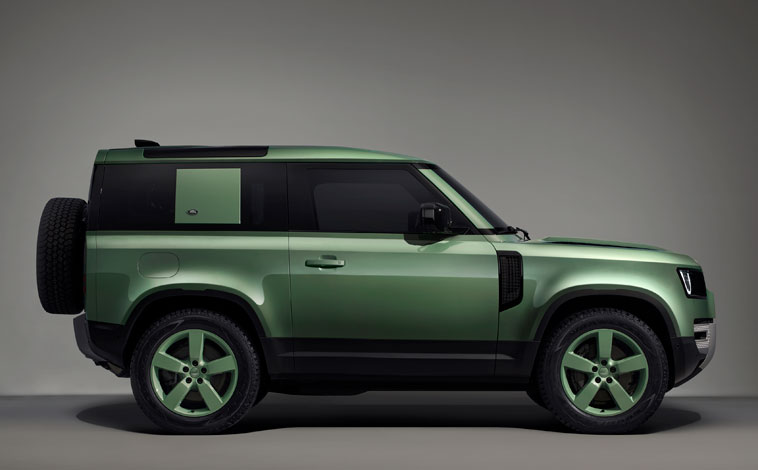
Defender celebrates 75th anniversary
In 1948, the Series I was introduced at the Amsterdam Motor Show and [...]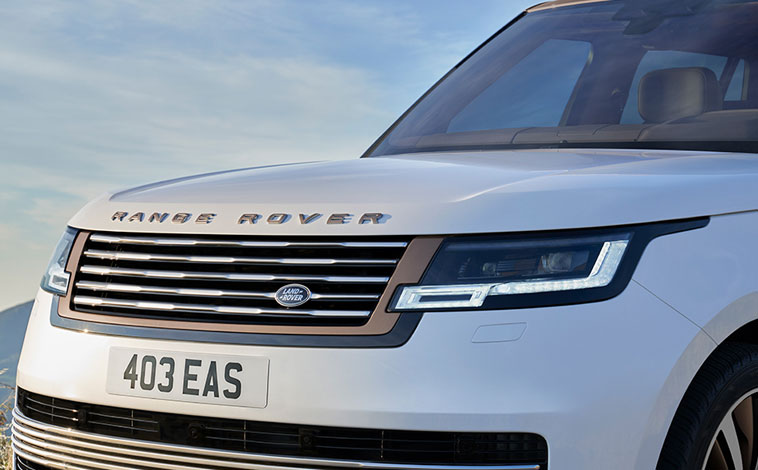
Range Rover SV to star at London show
The new Range Rover SV, Land Rover’s flagship model, makes its UK event [...]
Genesis expands its at-home test drives
Genesis UK has announced it has expanded its at-home test drive programme to [...]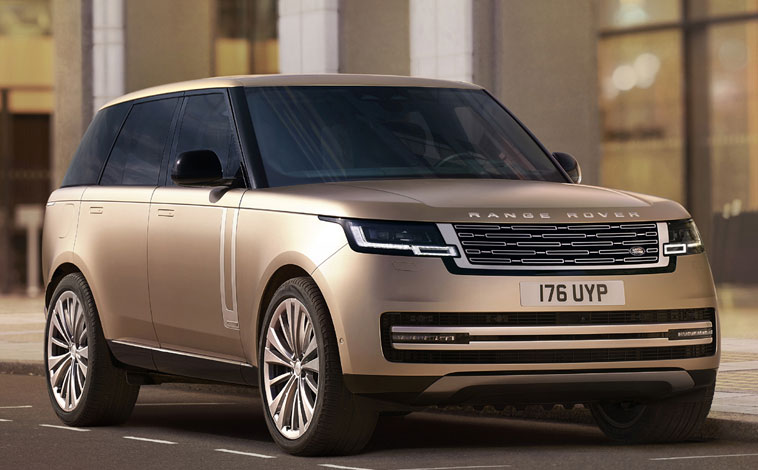
Mighty new Range Rover breaks cover
With prices starting from £94,400 the all-new Range Rover is about to break [...]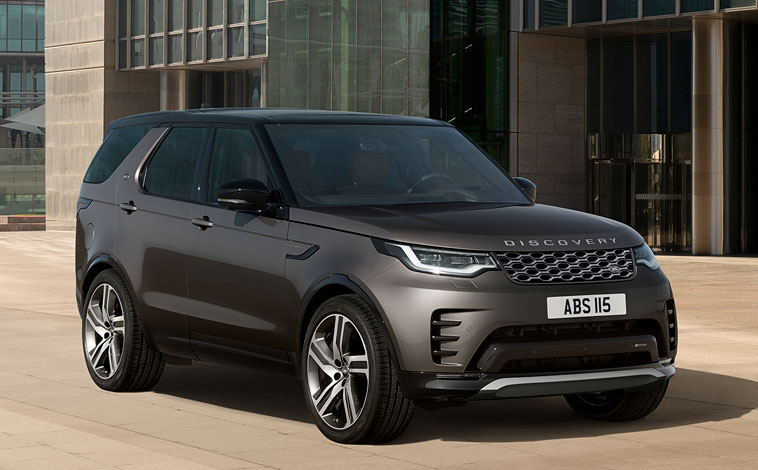
A new Discovery Metropolitan Edition
Land Rover has strengthened the appeal of its seven-seat Discovery with the introduction [...]
The Ultimate Range Rover Sport SVR
Special Vehicle Operations has launched a Range Rover Sport SVR with spectacular new [...]
Powerful HST model joins Evoque range
The appeal of the Range Rover Evoque has been broadened with the launch [...]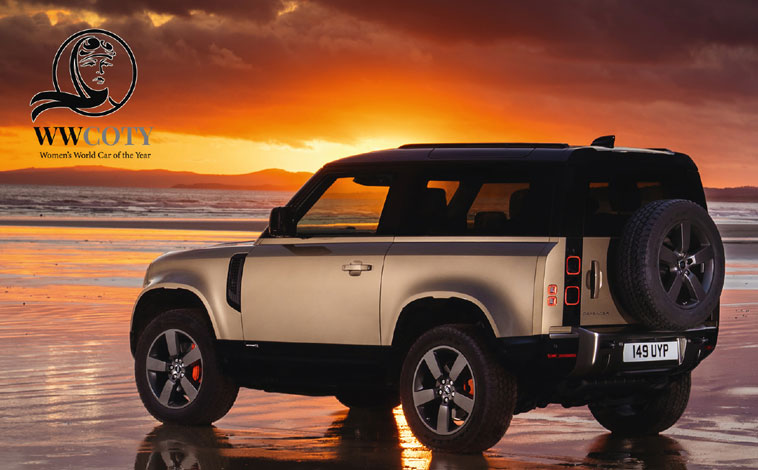
Defender scoops top global accolade
The Land Rover Defender has been named Supreme Winner Women’s World Car of [...]
Adventure-ready Land Rover Defender
Land Rover Classic is continuing the formidable expedition legacy of the original Defender [...]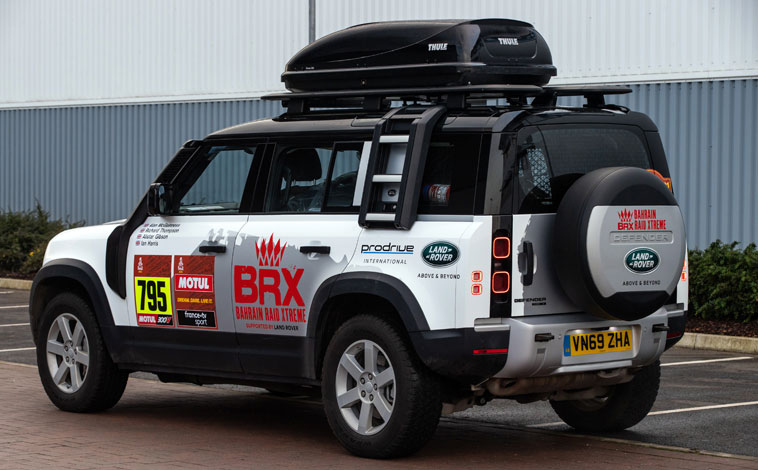
Defenders’ support role in Dakar Rally
Land Rover’s most capable and durable 4×4 is taking on the ultimate all-terrain [...]
Defender styling lives on with Bowler
Land Rover has given Bowler permission to produce vehicles using the classic Defender [...]
On the charge to an electrified future
This week saw the gathering of 20 of the world’s top car makers [...]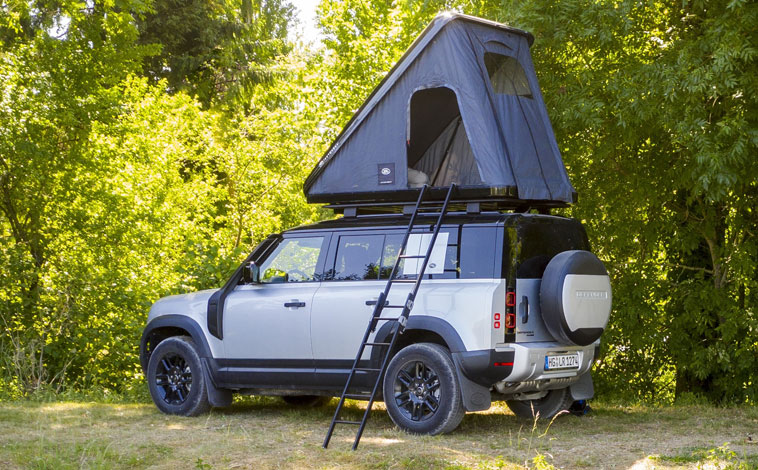
Defender roof tent is ideal for camping
Land Rover has teamed up with specialist Autohome to develop a bespoke roof [...]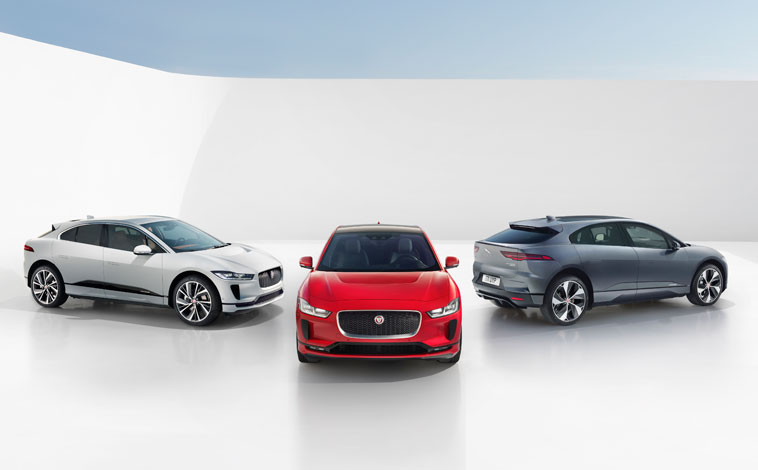
Buying a car from the comfort of home
Jaguar Land Rover UK is expanding its online and remote retail capabilities to [...]
Latest Defender does all its own stunts
Land Rover’s television commercial for the new Defender demonstrates its capability on tough [...]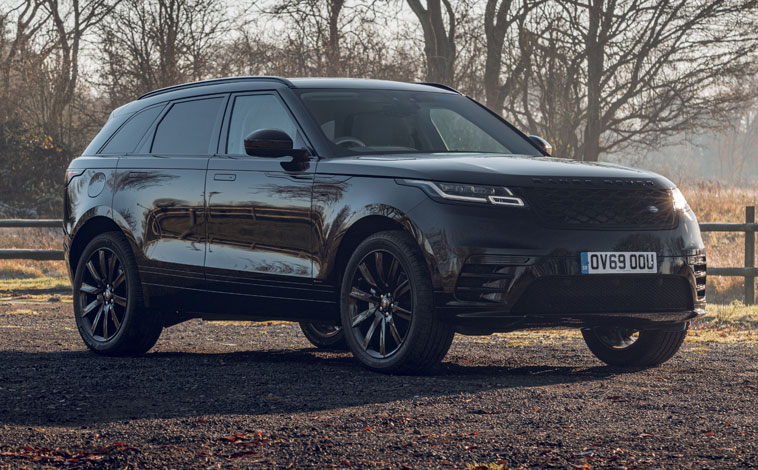
New Velar is limited to just 500 models
Land Rover has launched the Range Rover Velar R-Dynamic Black with an exclusive [...]Related Reviews

Toyota Corolla Commercial

Toyota Land Cruiser Commercial
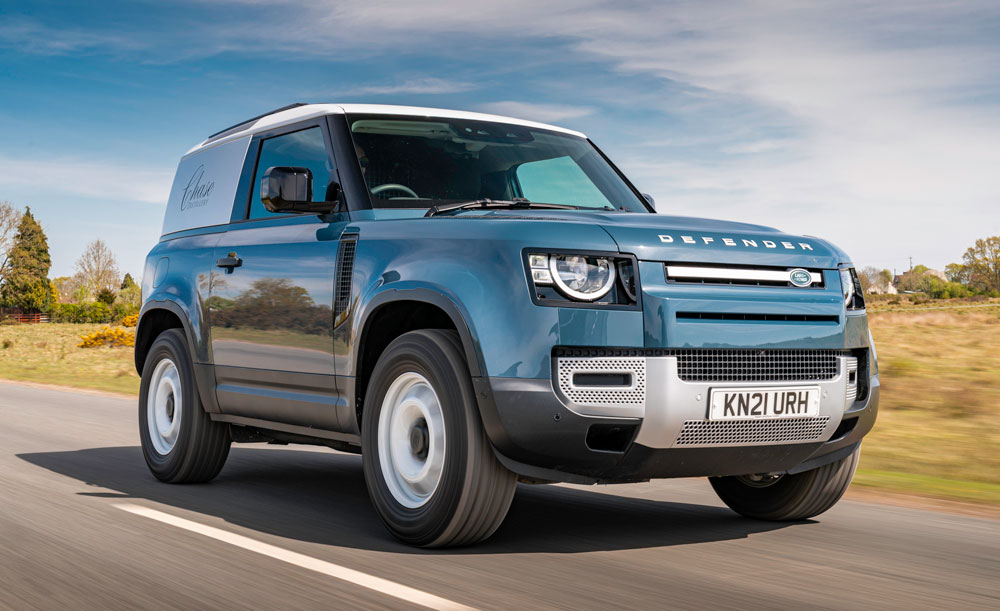
Land Rover Defender Hard Top
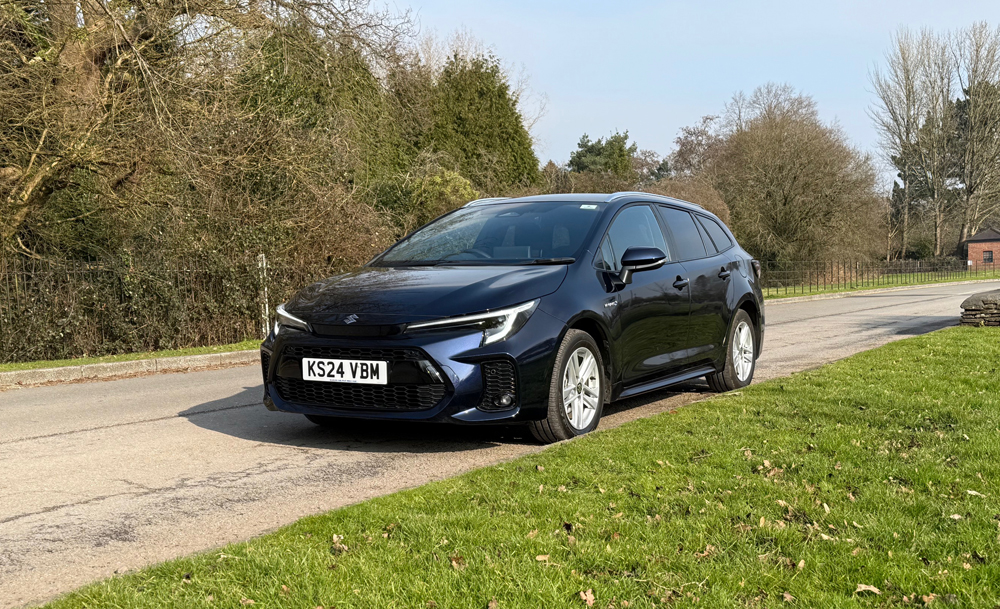
Suzuki Swace
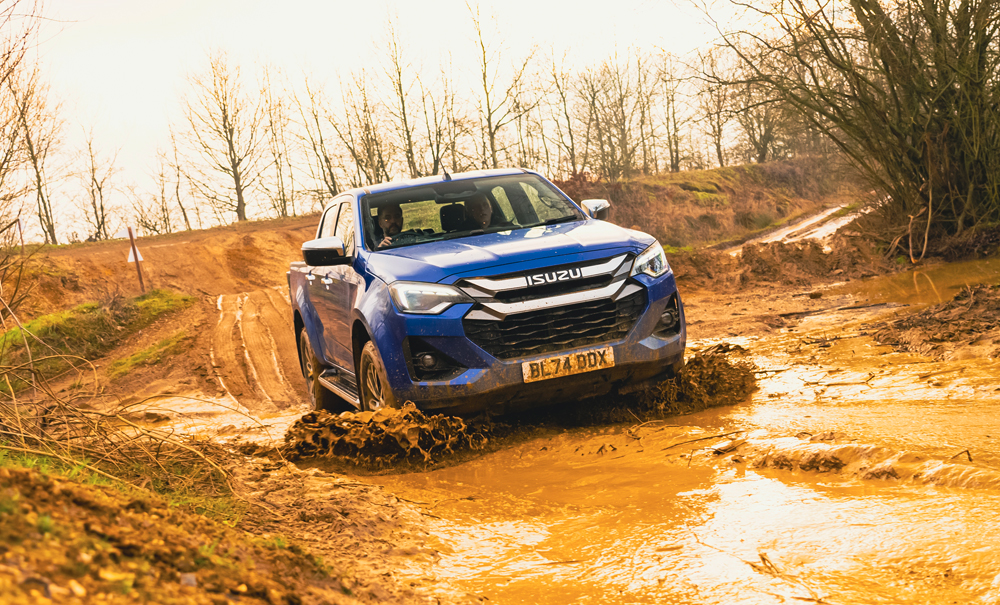
Highlighted Isuzu D-Max
Highlighted Jeep Wrangler
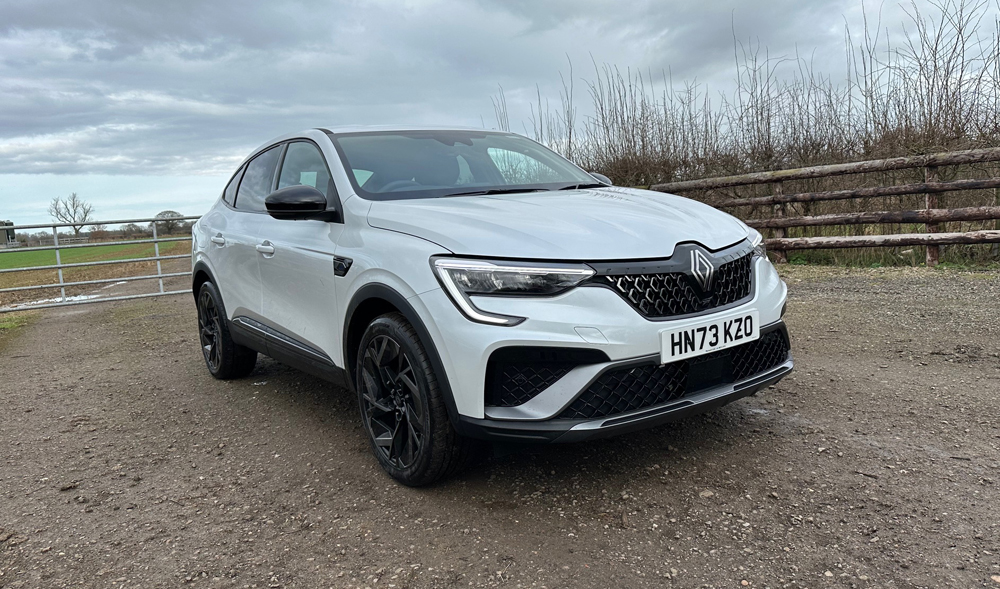
Renault Arkana
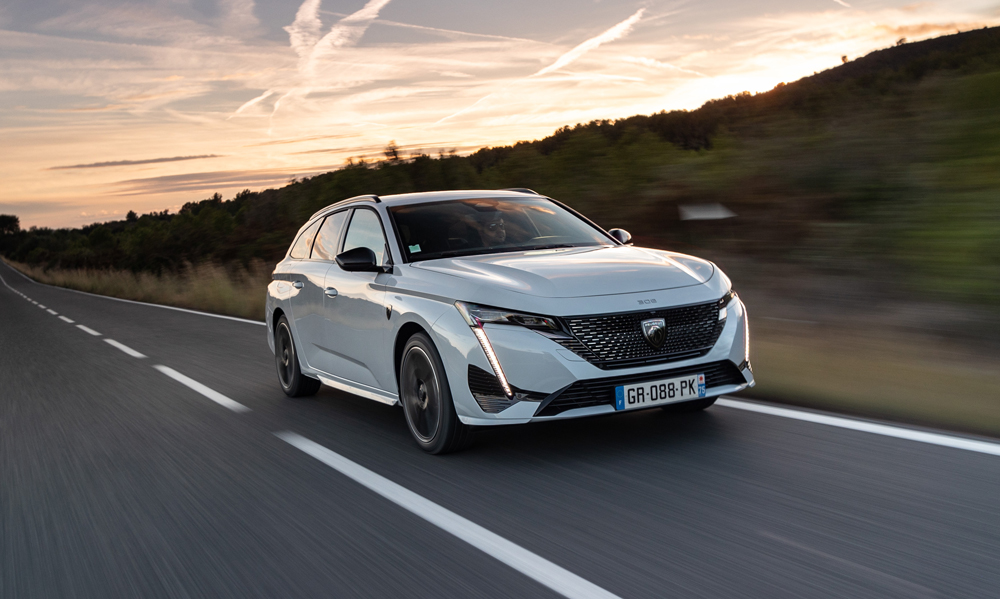
Highlighted Peugeot 308/E-308 SW
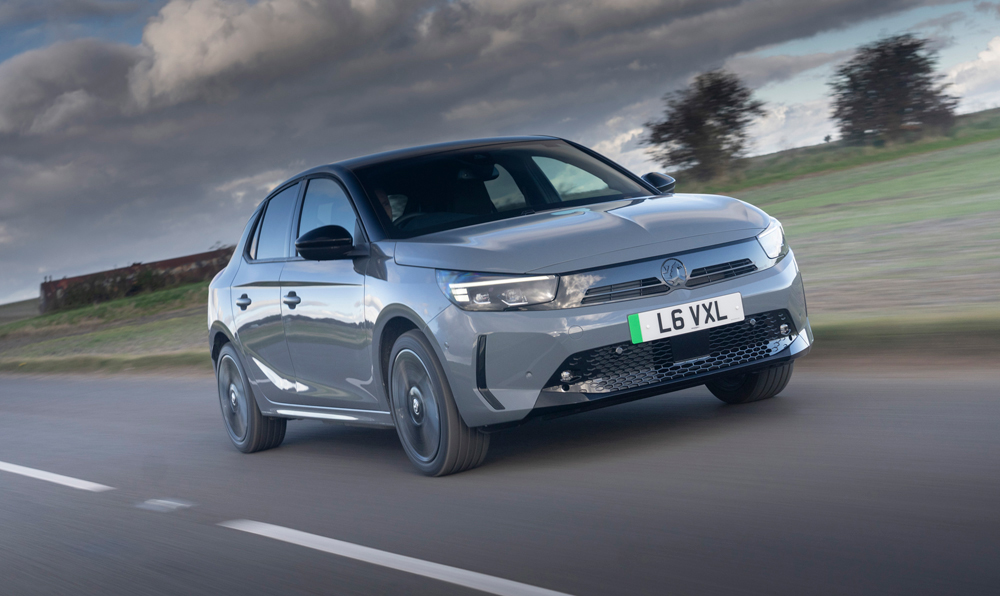
Vauxhall Corsa
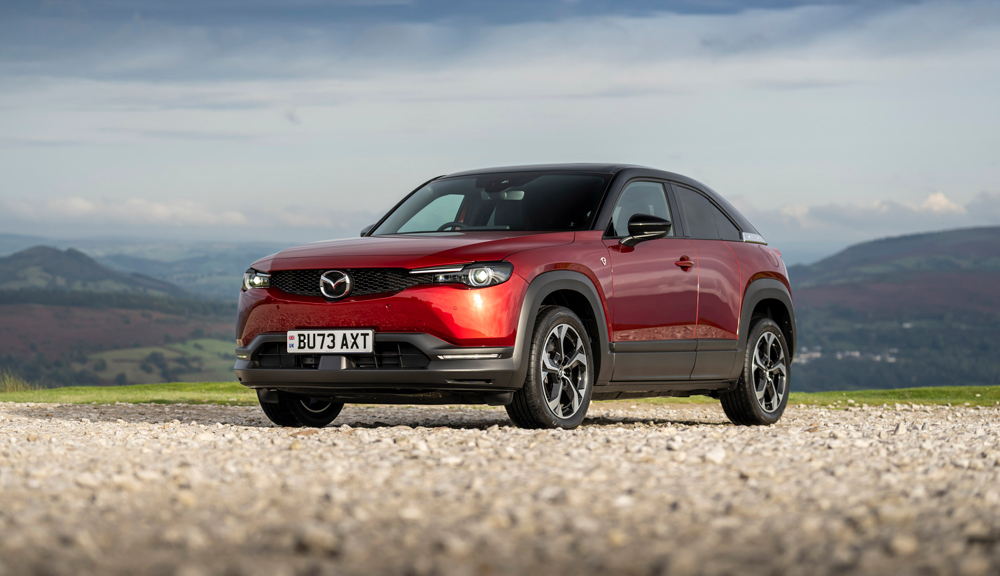
Highlighted Mazda MX-30
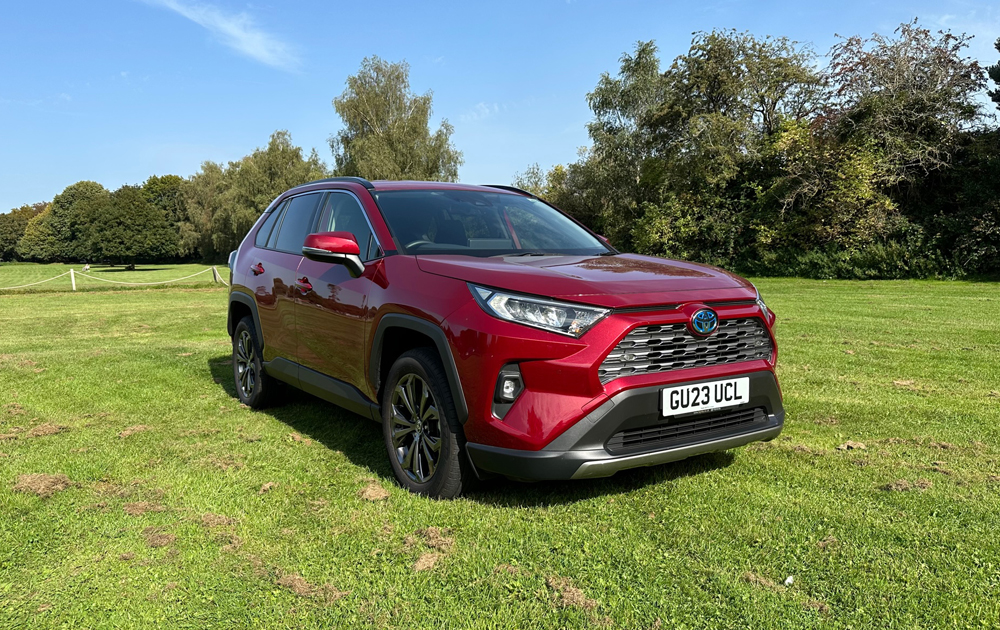
Highlighted Toyota RAV4
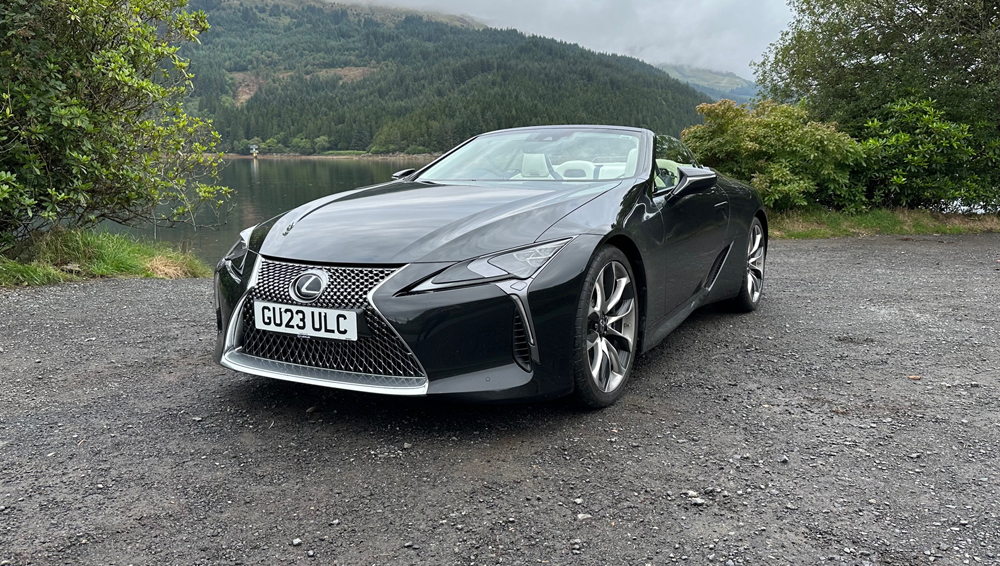
Lexus LC
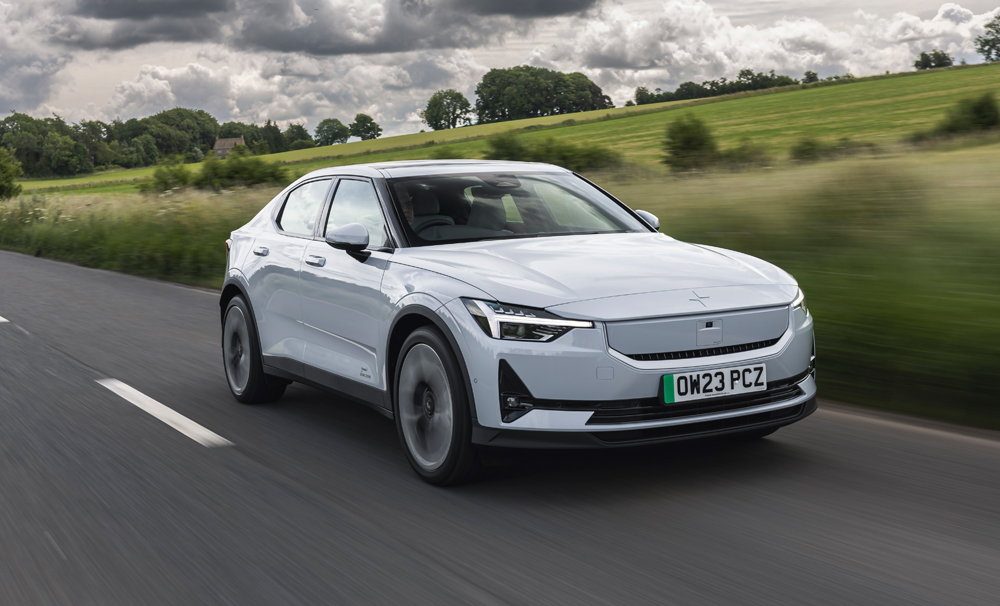
Polestar 2
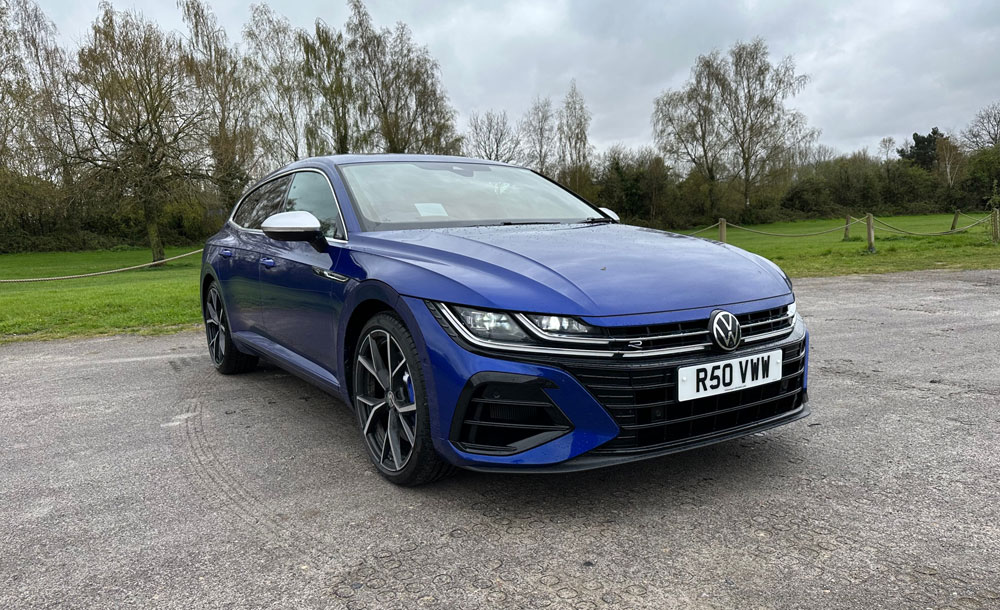
Volkswagen Arteon
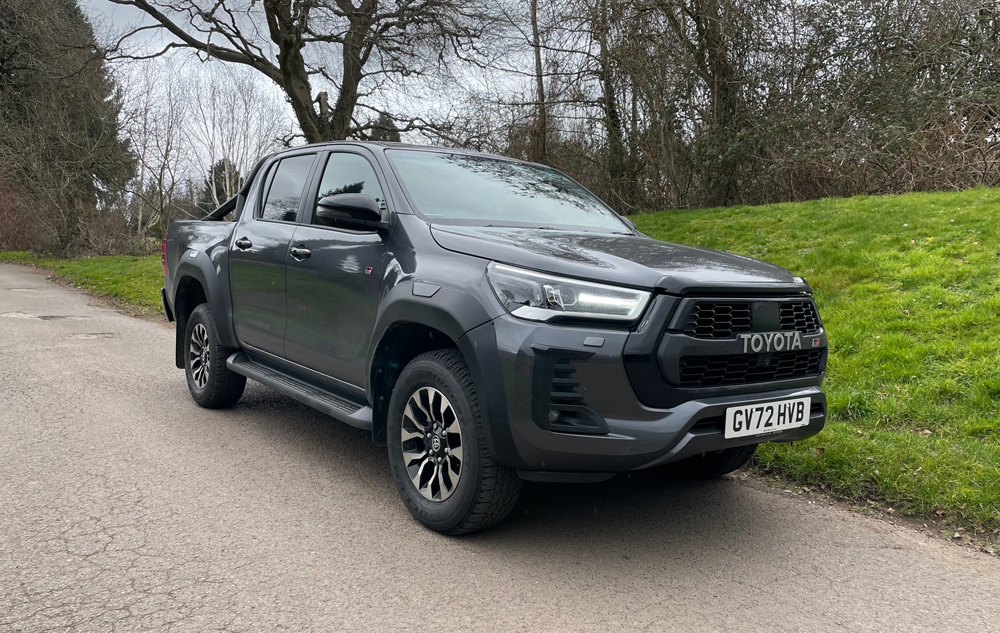
Toyota Hilux
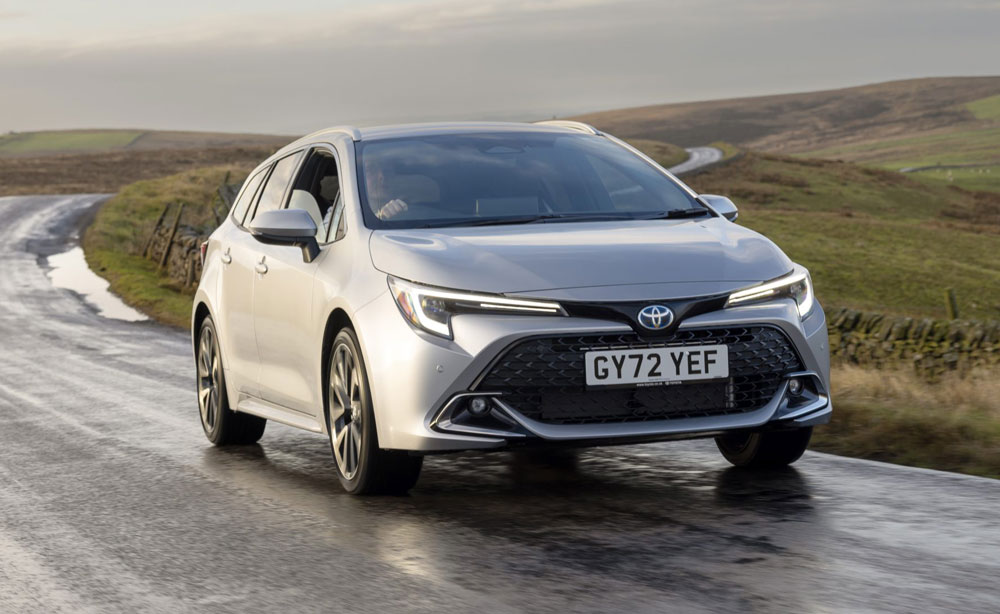
Toyota Corolla
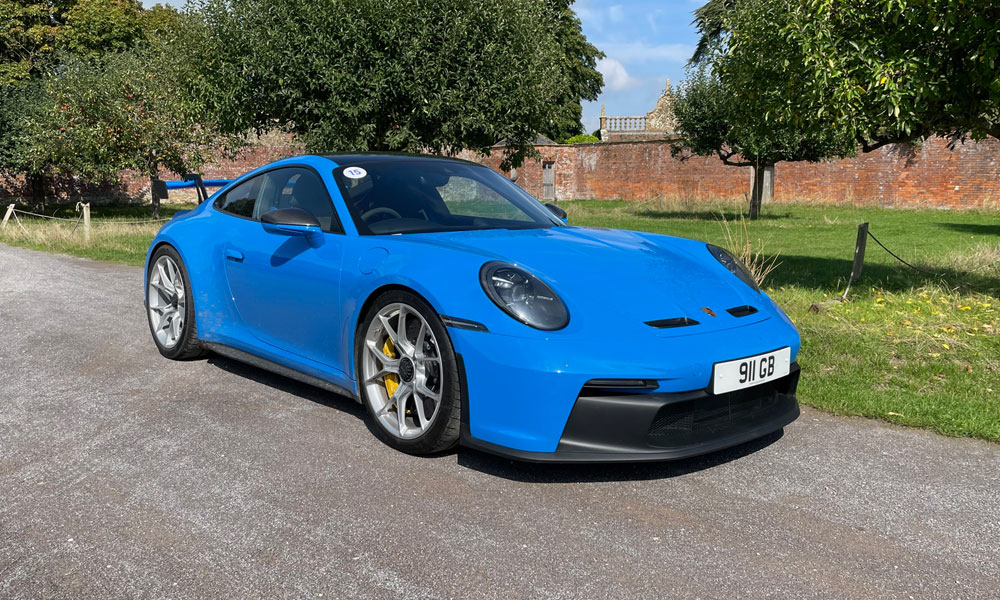
Porsche 911
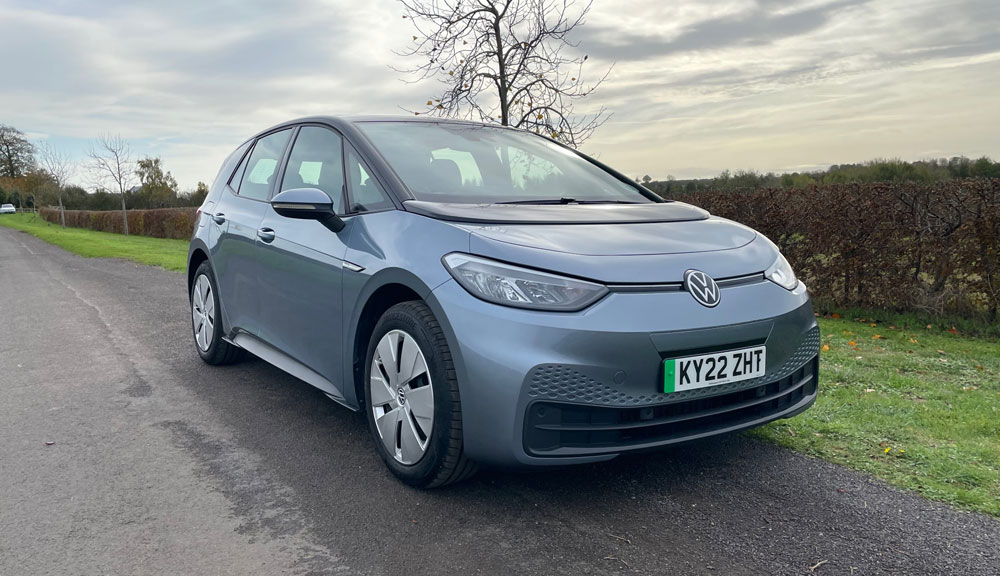
Volkswagen ID.3
